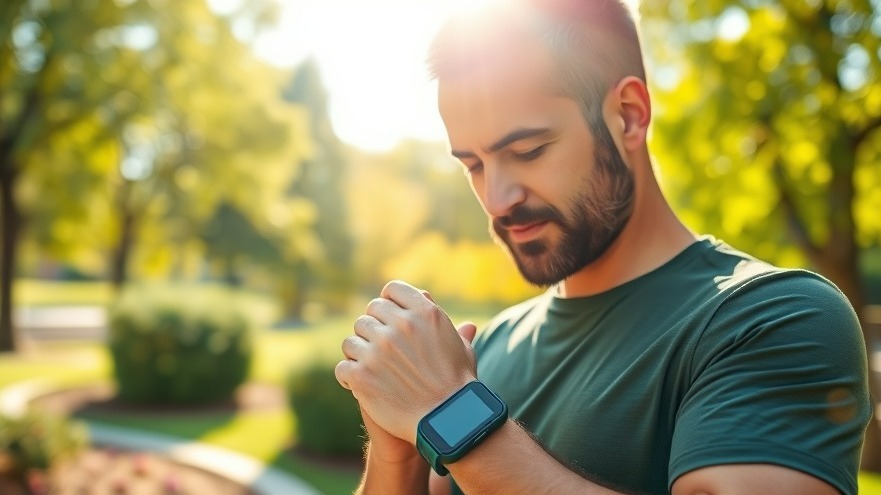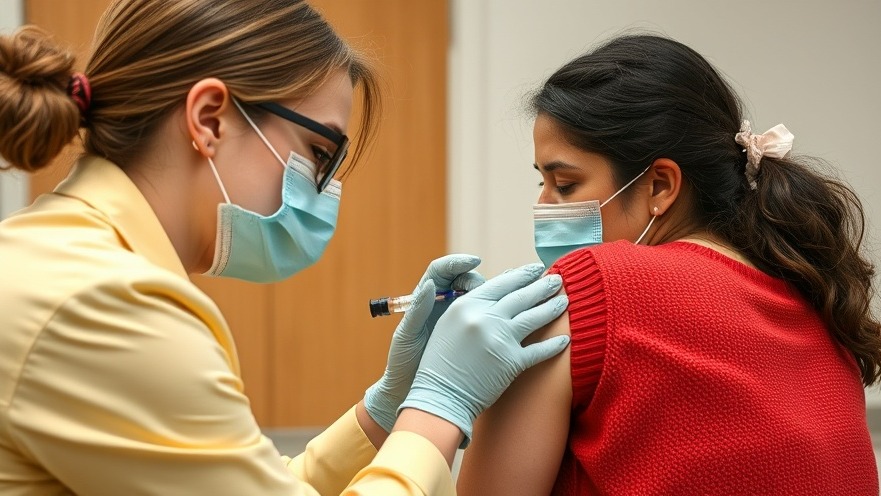
The Future of Diabetes Detection: No Needles, Just Technology
A new study from the University of Tokyo has introduced groundbreaking advances in diabetes detection through wearable glucose monitors. With the potential to revolutionize how we approach glucose regulation testing, this technology could significantly reduce reliance on traditional blood tests that often miss the earliest signs of diabetes.
Understanding the Silent Epidemic
Diabetes is often classified as a "silent epidemic", affecting millions globally with devastating health and economic repercussions. Traditional methods of diabetes detection frequently rely on infrequent blood tests, which can overlook critical fluctuations in glucose levels occurring in routine daily life. Early identification of impaired glucose regulation is vital in preventing the more severe onset of type 2 diabetes. The innovative approach employing continuous glucose monitoring (CGM) reflects a new frontier in the understanding and management of this complicated condition.
How Continuous Glucose Monitoring Works
CGM devices track glucose levels in real-time, providing immediate feedback about fluctuations in blood sugar. This continuous tracking allows for a nuanced understanding of an individual's metabolic processes, contrasting sharply with traditional testing methods that often miss the finer details. The comprehensive data collected by CGM can reveal critical patterns in glucose handling that could indicate an increased risk for diabetes before formal diagnosis.
The Science Behind the Innovation
Researchers at the University of Tokyo demonstrated the efficacy of CGM through a study involving 64 participants without prior diabetes diagnoses. They compared CGM data to more conventional testing methods such as oral glucose tolerance tests (OGTT) and clamp tests, validating their findings that CGM could detect issues in glucose regulation earlier than traditional methods. Using mathematical modeling, researchers introduced a CGM-derived index called AC_Var, which measures variability in glucose levels, providing an innovative method for assessing glycemic control over time.
Breaking Down Barriers: Accessibility and Cost
One of the standout features of CGM technology is its non-invasive nature. Unlike traditional methods requiring blood samples, CGM devices present a less intimidating and more convenient approach to testing. For concierge health practitioners, this offers a significant opportunity to enhance patient compliance and engagement in monitoring their health. With CGM's growing accessibility, patients may benefit from real-time insights into their health, empowering them to make informed lifestyle choices.
Implications for Concierge Health Practitioners
For concierge health practitioners who endeavor to provide cutting-edge care to their patients, integrating wearable technology into practice represents an exciting frontier. Understanding how to utilize CGM data effectively can enhance patient outcomes through personalized health plans. This technology allows for dynamic monitoring and timely interventions, reducing the risk of diabetes-related complications while promoting healthier lifestyles.
Collaborating for Better Healthcare Outcomes
As the healthcare landscape evolves, the integration of CGM into routine practice will require collaboration among practitioners, tech experts, and researchers. Continuous education on the practical applications of this technology will be vital in ensuring that practitioners can effectively offer this service to their patients.
Future Trends: Preparing for What's Next
The rise of wearable technology in healthcare is transforming patient-management strategies at an unprecedented rate. As CGM becomes more prevalent, healthcare systems will need to adapt and embrace these advancements. Meeting patients where they are—through convenient, patient-centric technology—will be a crucial component in providing quality care and improving diabetes management in the future.
With these advancements, healthcare providers are encouraged to stay informed about evolving technologies that can significantly impact patient health. Continuing education and training on tools like CGM will not only enhance practitioner capabilities but also lead to better health outcomes for patients.
To learn more about integrating continuous glucose monitoring technology into your practice and how it may enhance patient care, consider engaging in further training or consultations with technology experts. This proactive approach will ensure you remain at the forefront of diabetes prevention and management.
 Add Row
Add Row  Add
Add 






Write A Comment